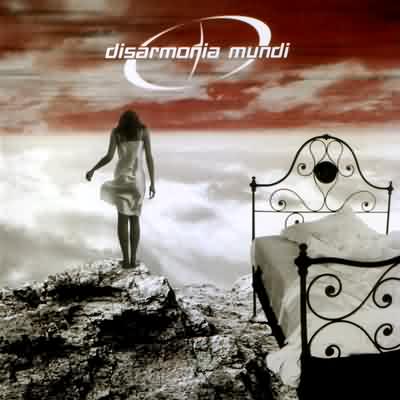
Disarmonia Mundi – Nebularium – 4/5
http://www.mediafire.com/?
http://www.mediafire.com/?
Ok, so this kicks off the large number of “unknown” band reviews. (I recently acquired a number of albums from bands I’ve never heard of but sounded intriguing), and this is the one to kick it off. I’ve been waiting for the time to give this a proper listen so I can get a review up about it. Why? Because its quite possibly the closest thing to Disillusions “Back To Times of Splendor” that I’ve heard since…well since I heard Disillusion :p
Ok, so that comparison may not be completely fair. They both play a blend of Prog and Melodic Death Metal but both tackle it from a different way. Where Disillusion was fairly straight forward, this is very much more of an avant-garde piece, consisting largely of Prog/Melodeath. There are classically influenced sections, industrial vocals at times, soft melodic sections filled with clean emotional singing, jazzy sections and deathly growls over riffs bordering the level of complexity and addictive nature of disillusion, in fact there are times when you wonder what exactly you’re listening to. Then it kicks right back into it and you remember.
A key thing to note is that it never really kicks into typical full on Death Metal aggression mode. If your after a blast-beating raw aggression, you wont find it here - This very much more a controlled and steady aggression. If most Death Metal aims to sound like its gonna jump you and rip your heart out, this is more like yelling at you before walking off only to be seen later on playing with a knife with a sadistic glint in their eye. Its controlled, but the aggression is still present, just perhaps more subtle.
The album kicks off with the aptly named “Into Disarmonia Mundi.” This track was actually somewhat disappointing, not necessarily bad but it doesn’t give a good representation of the bands sound, nor capabilities. It’s a largely good but linear, slow atmospheric intro track, extended out a bit to include some vocals and, rather oddly, a guitar solo. “Blue Lake” is where it kicks off, with an addictive riff and a scream it shows the musicianship of the members, utilising both growls and cleaner singing, with plenty of variation between the main riff it keeps interest high, until suddenly about 2/3rds of the way through, we hit a jazz…I hesitate to say “breakdown” of a sort.
This is by no means the strongest track on the album, but it highlights the ability of these two musicians in the array of sounds they are capable of producing. “Mechanichell” has a thrashy feel to it and “Burning cell” has a heavily old-school death metal sound somehow successfully combined with electro-vocals and a power metal solo for example. These guys seem to produce a never-ending stream of styles and sounds and slap them right in the mix.
The vocals aren’t as emotional as id like, which is a major down point for me. Their largely highly variable in sound and style which is where I expect the replay value to emerge, rather than specific ability in any one area, but luckily this is compensated by the guitar work and drumming – both done by the same guy might I add – who not only seems to be able to seamlessly incorporate a variety of styles, but do it in a way that evokes a particular sense. Be it a upbeat jazz beat, an aggressive drum section, an addictive thrashy or deathly riff, an evil tone or a quick emotional power metal solo, he seems to have got it down well. He’s by no means a master of any particular style, but most musicians would be happy to accomplish just one of these styles as well.
This is by no means a perfect album. This isn’t going to replace Disillusions place on my playlist anytime soon, and some of the tracks feel weak – but that’s to be expected when you consider how unique each track turns out – and for a prog album it feels rather short, clocking at only 47mins. Simply, what we have is a solid album which seems to have been overlooked.
Highlights: Blue Lake, Mechanichell, Burning Cells.
By T. Bawden.
Comments